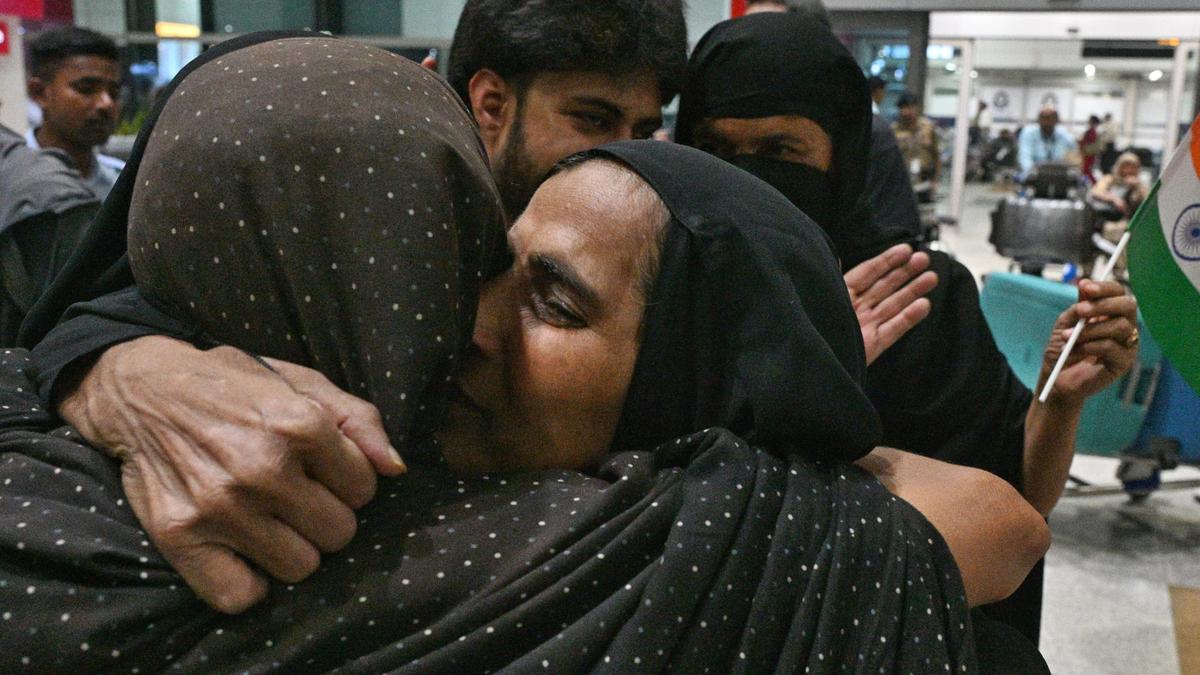
Families evicted from Moolampilly for the International Container Trans-shipment Terminal at Vallarpadam (ICTT) project staging a candle-light protest on the 17th anniversary of the Moolampilly package in Kochi on June 4, 2025. Photo : Thulasi Kakkat/The Hindu
Seetha Vidyadaran, 60, has been experiencing a sinking feeling ever since she, along with her family, moved into her newly built house of less than 600 sq. ft. on a four-cent plot by a canal in Thuthiyoor near Kakkanad in Ernakulam district in 2014.
Her house remains one of just three houses on the rehabilitation site assigned to 56 families evicted from the Edappally South and North villages for the rail connectivity for the Vallarpadam International Container Trans-shipment Terminal in 2008. One house has tilted, and Ms. Vidyadaran’s house has subsided bit by bit from the day it was built, thanks to the marshy nature of the rehabilitation site in Vazhakkala village of Thrikkakara municipality.
While families in those two structures chose to stay on despite the risk involved, the remaining family moved out, considering the precarious nature of their house. Now, there is an obvious tilt to the house, and even the stepping stones to the house are progressively getting subsided. But the family comprising Ms. Vidyadaran’s 70-year-old husband, their two sons and their families, and Mr. Vidyadaran’s differently-abled sister, has no choice but to risk living in the damaged structure.
“Our house has been getting inundated from the very outset, not to mention the reptiles that come with the flood water through the canal. We lost two cattle to snake bites a few years back. The retaining wall of the canal left out our plot alone since it was on the canal’s edge,” rues Ms. Vidyadaran.
The family’s woes are likely to get aggravated even further in the wake of the potential filling up of the site by one metre to reinforce it. “Then we will be left in a ditch, and our house, already prone to waterlogging, will become a collecting point for water. There is no other alternative but to pull down the existing house and rebuild it,” said Ms. Vidyadaran.
She said the family could not afford proper land filling since the ₹75,000 allotted by the authorities was grossly inadequate, considering that a solid and durable filling cost around ₹2.50 lakhs back in 2014. “We decided to build the house in the first place out of fear that the ₹6 lakhs we received in compensation while evicted may get exhausted in rent otherwise. We could not afford to pay rent out of our meagre income as authorities stopped giving rent a year after the eviction,” she said.
Published – June 04, 2025 05:30 pm IST


